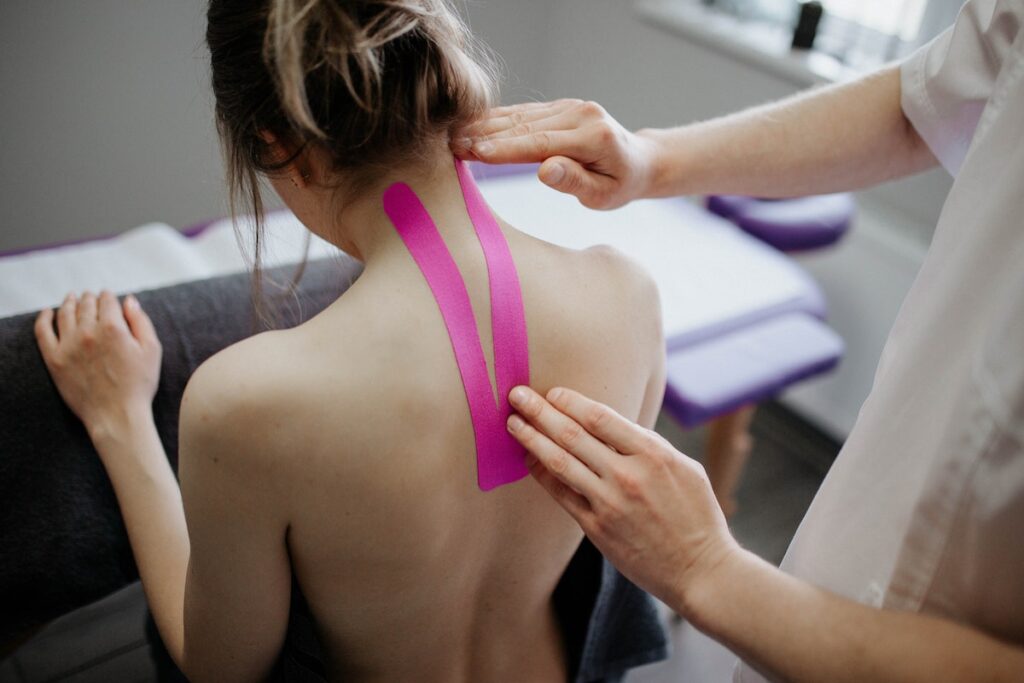Introduction
Upper back and neck pain are common complaints affecting individuals of all ages and lifestyles. The upper back, also known as the thoracic spine, is a complex region comprising numerous bones, muscles, and nerves. This area provides support to the chest and shoulders while enabling flexibility for various movements. The neck, or cervical spine, is an intricate structure that supports the head and allows for head movements. Understanding the causes, remedies, and prevention of upper back and neck pain is crucial for alleviating discomfort and enhancing overall well-being. In this comprehensive article, we will delve into the intricacies of upper back and neck pain, exploring their common causes, effective remedies, and preventive measures to lead a pain-free life.
Anatomy of the Upper Back and Neck
- Upper Back (Thoracic Spine): The upper back, or thoracic spine, consists of twelve vertebrae (T1-T12) that connect the cervical and lumbar regions of the spine. The thoracic spine provides structural support to the ribcage, chest, and shoulders. The vertebrae in this region are less mobile than those in the neck and lower back, primarily focusing on rotational movements and stability.
- Neck (Cervical Spine): The neck, or cervical spine, comprises seven vertebrae (C1-C7) that support the head and provide a wide range of motion. The first two cervical vertebrae, known as the atlas (C1) and axis (C2), are unique and allow for the majority of the neck’s flexibility.
- Muscles and Ligaments: The upper back and neck are supported by various muscles and ligaments that provide stability and enable movements. Key muscles include the trapezius, rhomboids, levator scapulae, and neck flexors and extensors. Ligaments connect the vertebrae and stabilize the spine during motion.
Causes of Upper Back and Neck Pain
- Poor Posture: One of the leading causes of upper back and neck pain is poor posture. Spending extended periods hunched over screens or sitting with slouched shoulders places excessive strain on the muscles and ligaments in the upper back and neck, leading to discomfort and pain.
- Muscle Strain and Tension: Muscle strain and tension often result from overuse, repetitive movements, or sudden forceful actions. Prolonged muscle tension can lead to knots and trigger points, contributing to upper back and neck pain.
- Degenerative Conditions: Degenerative conditions, such as osteoarthritis or degenerative disc disease, can affect the vertebrae and discs in the spine, causing pain and reduced mobility in the upper back and neck.
- Herniated Discs: A herniated disc occurs when the soft, gel-like center of an intervertebral disc protrudes through its tough outer layer and compresses nearby nerves. This condition can lead to localized or radiating pain in the upper back and neck.
- Whiplash: Whiplash is a neck injury commonly caused by a sudden jerking motion of the head, often occurring during car accidents. This injury can lead to neck pain, stiffness, and reduced range of motion.
- Stress and Emotional Factors: Emotional stress and tension can manifest physically as muscle tightness and pain in the upper back and neck. Chronic stress can exacerbate existing conditions or lead to new pain symptoms.
Effective Remedies for Upper Back and Neck Pain

- Stretching and Mobility Exercises: Regular stretching and mobility exercises can help alleviate muscle tension and improve flexibility in the upper back and neck. Exercises like neck rolls, shoulder shrugs, and thoracic spine rotations can be beneficial.
- Heat and Cold Therapy: Applying a heating pad or warm compress to the affected area can help relax tense muscles and promote blood flow. Alternatively, cold packs can reduce inflammation and numb painful areas.
- Massage Therapy: Massage therapy can target specific muscles in the upper back and neck to release tension, reduce knots, and promote relaxation. Deep tissue massage and myofascial release are particularly effective for addressing muscular issues.
- Posture Correction: Conscious efforts to improve posture can significantly reduce upper back and neck pain. Maintaining a neutral spine alignment while sitting and standing can alleviate stress on the muscles and ligaments.
- Ergonomic Adjustments: Ensure that workstations and seating arrangements are ergonomically designed to support proper posture and reduce strain on the upper back and neck. Adjust the height of chairs and screens to eye level to maintain a neutral head position.
- Pain Medications: Over-the-counter pain medications, such as ibuprofen or acetaminophen, can provide temporary relief from upper back and neck pain. However, prolonged use should be supervised by a healthcare professional.
Preventive Measures to Avoid Upper Back and Neck Pain
- Regular Exercise: Engaging in regular physical activity helps keep the muscles and ligaments in the upper back and neck strong and flexible. Incorporate exercises that target the upper back and neck, such as swimming, yoga, or Pilates.
- Proper Lifting Technique: When lifting objects, use your leg muscles to lift rather than straining the upper back and neck. Keep the object close to your body and avoid twisting while lifting.
- Breaks from Prolonged Sitting: Take regular breaks from prolonged sitting, especially if your work involves desk-based activities. Stand up, stretch, and move around every hour to relieve pressure on the upper back and neck.
- Stress Management: Practice stress-reducing techniques, such as meditation, deep breathing, or mindfulness exercises, to alleviate emotional tension that can contribute to upper back and neck pain.
- Sleep Position: Ensure that your sleep position supports proper spinal alignment. Avoid sleeping on your stomach and opt for a supportive pillow that keeps your head and neck in a neutral position.
- Maintain a Healthy Weight: Excess body weight can strain the muscles and ligaments in the upper back and neck. Maintain a healthy weight through a balanced diet and regular exercise.
Conclusion
Upper back and neck pain can significantly impact daily life and overall well-being. Understanding the underlying causes, adopting effective remedies, and implementing preventive measures are crucial for managing and preventing discomfort in these regions. By prioritizing good posture, regular exercise, stress management, and ergonomic adjustments, we can promote a healthy spine and reduce the likelihood of upper back and neck pain. If pain persists or worsens, it is essential to seek medical advice for a comprehensive evaluation and personalized treatment plan. Taking care of our upper back and neck is essential for maintaining a pain-free and active lifestyle.



